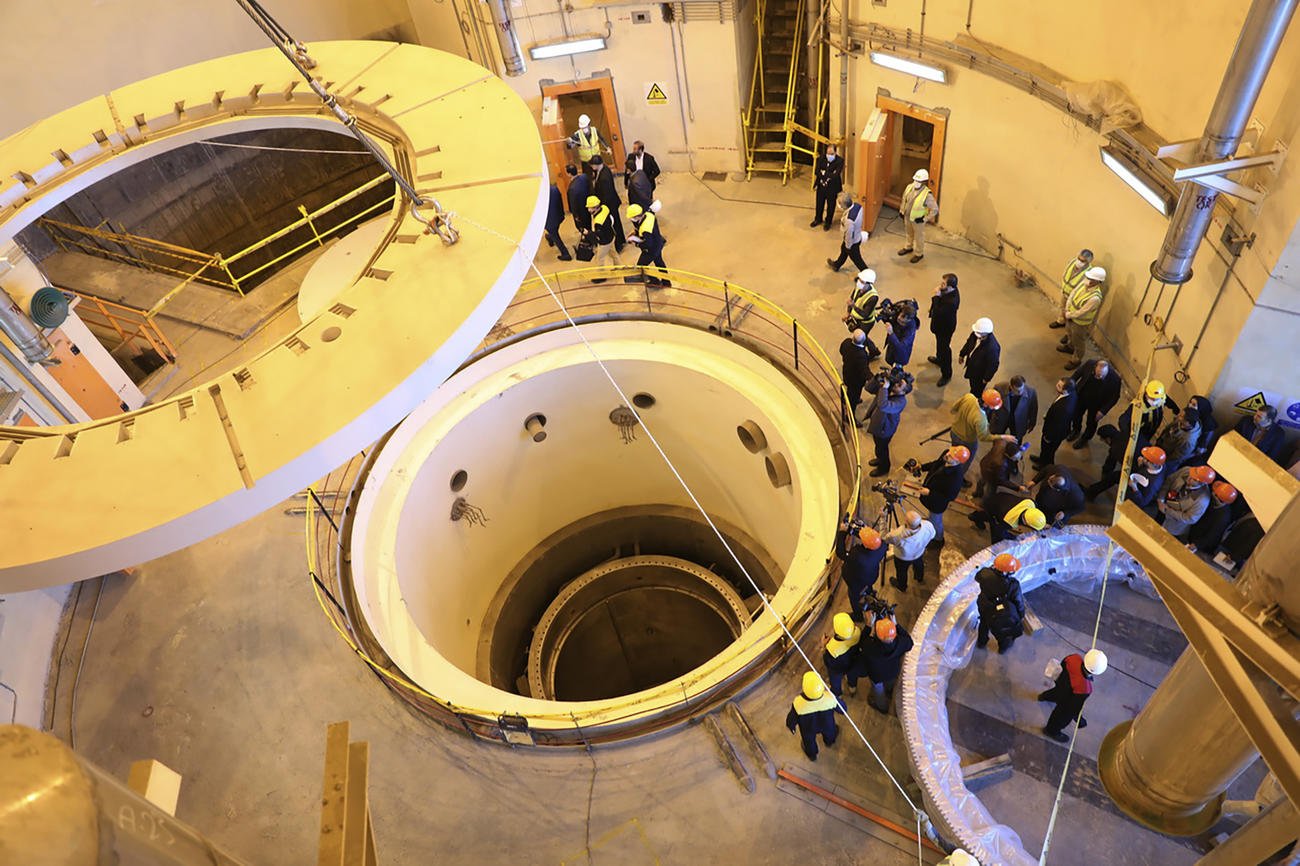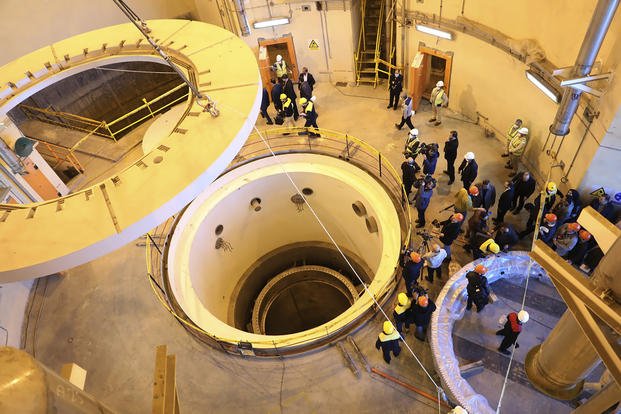

DUBAI, United Arab Emirates — Iranian officials now speak openly about something long denied by Tehran as it enriches uranium at its closest-ever levels to weapons-grade material: The Islamic Republic is ready to build an atomic weapon at will.
The remarks could be bluster to force more bargaining-table concessions from the U.S. without planning to seek the bomb. Or, as analysts warn, Iran could reach a point like North Korea did some 20 years ago where it decides having the ultimate weapon outweighs any further international sanctions.
All this could be put to the test Thursday as Iran, the U.S. and the European Union prepare for a snap summit that appears to be a last-ditch effort in Vienna to revive Tehran’s tattered nuclear deal amid the new pressure. That includes one Iranian video online suggesting the country’s ballistic missiles could “turn New York into a heap of rubble from hell.”
Hyperbole aside, the language taken as a whole marks a distinct verbal escalation from Tehran.
“In a few days we were able to enrich uranium up to 60% and we can easily produce 90% enriched uranium. … Iran has the technical means to produce a nuclear bomb but there has been no decision by Iran to build one,” Kamal Kharrazi, an adviser to Supreme Leader Ayatollah Ali Khamenei, told Al Jazeera in mid-July. Uranium enriched at 90% is considered weapons-grade.
Ataollah Mohajerani, a culture minister under reformist President Mohammad Khatami, then wrote in Iran’s Etemad daily newspaper that Kharrazi’s announcement that Iran could make a nuclear weapon provided a “moral lesson” for Israel and President Joe Biden.
And finally Mohammad Eslami, the head of Iran’s civilian nuclear agency, made his own reported comment about a potential military aspect to Iran’s program.
“As Mr. Kharrazi mentioned, Iran has the technical ability to make an atomic bomb, but there is no such plan on the agenda,” Eslami said Monday, according to the semiofficial Fars news agency.
Eslami’s agency later said he had been “misunderstood and misjudged” — likely a sign Iran’s theocracy didn’t want him to have been so specific. Eslami’s threat also carries more weight than others as he’s directly worked for Iranian defense agencies linked to Iran’s military nuclear program — including one that secretly built uranium-enriching centrifuges with Pakistani nuclear proliferator A.Q. Khan’s help.
But by 2003, Iran had abandoned its military nuclear program, according to U.S. intelligence agencies, America’s European allies and IAEA inspectors. The U.S. had just invaded Iraq, citing later-debunked claims of Saddam Hussein hiding weapons of mass destruction. America already was at war in Afghanistan, another nation neighboring Iran.
Libya under then-dictator Moammar Gadhafi gave up its own nascent military atomic program that relied on the same Pakistani-designed centrifuges that Tehran bought from Khan.
Ultimately, Iran reached its 2015 nuclear deal with world powers, which saw it receive economic sanctions relief while it drastically curtailed its program. Under the deal, Tehran could enrich uranium to 3.67%, while maintaining a stockpile of uranium of 300 kilograms (660 pounds) under constant scrutiny of IAEA surveillance cameras and inspectors.
But then-President Donald Trump unilaterally withdrew America from the accord in 2018, saying he’d negotiate a stronger deal including Tehran’s ballistic missile program and its support of regional militant groups. He didn’t. Attacks on land, at sea and in the air raised tensions across the wider Mideast. And Iran after a year began breaking the deal’s terms.
As of the last public IAEA count, Iran has a stockpile of some 3,800 kilograms (8,370 pounds) of enriched uranium. More worrying for nonprofileration experts, Iran now enriches uranium up to 60% purity — a level it never reached before that is a short, technical step away from 90%. Those experts warn Iran has enough 60%-enriched uranium to reprocess into fuel for at least one nuclear bomb.
Iranian diplomats for years have pointed to Khamenei’s preachings as a binding fatwa, or religious edict, that Iran wouldn’t build an atomic bomb.
“We do not need nuclear bombs. We have no intention of using a nuclear bomb,” Khamenei said in a November 2006 speech, according to a transcript from his office. “We do not claim to dominate the world, like the Americans, we do not want to dominate the world by force and need a nuclear bomb. Our nuclear bomb and explosive power is our faith.”
But such edicts aren’t written in stone. Khamenei’s predecessor, Grand Ayatollah Ruhollah Khomeini, issued fatwas that revised his own earlier pronouncements after he took power following the 1979 Islamic Revolution. And anyone who would follow the 83-year-old Khamenei as the country’s supreme leader could make his own fatwas revising those previously issued.
For now though, it appears Iran will continue to lean into the atomic threat. Public opinion appears to be shifting as well.
A July telephone survey by IranPoll, a Toronto-based firm, suggests about a third of the Iranian public now support abandoning the Treaty on the Nonproliferation of Nuclear Weapons and pursuing the bomb. A September 2021 poll found less than one in 10 respondents supported such a move.
The margin of error for the firm’s two polls of 1,000 respondents was around 3 percentage points.
A video recently posted online by an account believed to be associated with Iran’s paramilitary Revolutionary Guard bluntly made the missile threat on New York. It described Iran as being “one step away from a nuclear breakthrough and from joining (other countries) that have nuclear weapons.”
The video’s title? “When Will Iran’s Nuclear Bombs Be Awakened From Their Slumber?”
© Copyright 2022 Associated Press. All rights reserved. This material may not be published, broadcast, rewritten or redistributed.
